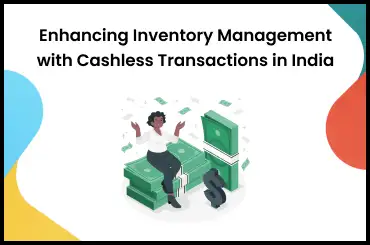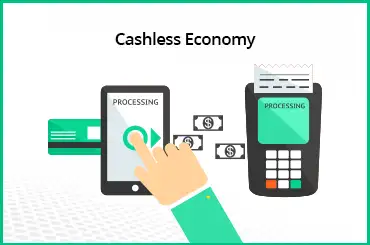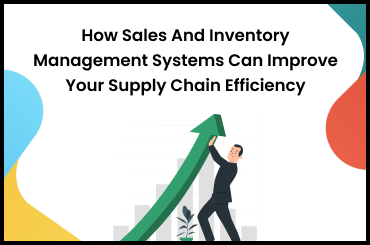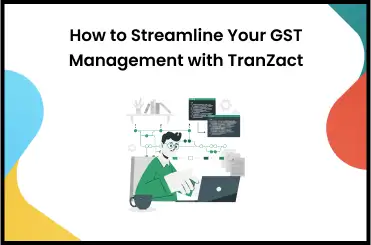Knowing how to calculate selling price and how to devise effective pricing is a crucial aspect to gain a strong foothold in a highly competitive market. Running a business profitably is the goal of every business owner. For this, you must master many business concepts like inventory analysis and capacity utilization.
The selling price of every product in your company is the ultimate factor that will ensure the company is running at a profit. Continue to read if you want to understand types of pricing strategies, types of selling price calculations, how to find the best pricing strategy, and finally how to calculate the selling price.
What Is Selling Price?
The selling price is the buying price of an item for a customer that includes the manufacturer's or seller's profit. Both underpricing and overpricing can prove disastrous. Underpricing will hamper your profit margin, and overpricing will keep your customers away from purchasing your goods.
So, calculating the selling price is one of the most vital aspects one should start pondering over even before one starts planning to manufacture goods. You must determine the selling price of your goods during the business planning stage itself. It is because you need to gauge profitability beforehand and understand whether the business is a viable venture or not.
Want to know how to calculate the selling price? For this, you can use the formula for finding the selling price.
What Is the Average Selling Price?
The average selling price (ASP) is the cost at which a product is sold in different types of markets. If you are yet to launch your product in the market, you must study this metric of competitors to set your selling price.
If your price is more than ASP, it will give the potential buyers a perception of a new premium brand. However, if your selling price (SP) is less than ASP, your profit margin would decrease.
The formula to calculate it is:
Average Selling Price = Total Revenue From the Sale of a Product / Number of Products Sold
Many factors affect the average selling price, such as the type or category of product, its life cycle, and its demand in the market. Once the average selling price of a category of a product has been determined, it sets a benchmark in the industry for manufacturers, retailers, and producers for their own set of products.
Next, let's see more about how to calculate the selling price of a product.
How to Calculate Selling Price of a Product Using Formula?
Determining the perfect selling price is a key factor that can make or break a company. So, it is important to know how to find the selling price.
First, know your cost price by using the following formula:
Cost Price = Raw Materials + Direct Labor + Manufacturing Overhead
Once you know your cost price, next you can add your profit and get the selling price. Some other factors that affect a selling price are the prices of competitors, product type (premium or affordable), and marketing strategies. The selling price would then be:
Selling Price = Cost Price x 1.25 or desired profit margin
Types of Selling Price Calculations
If you want to improve your profit margins, you must adjust your selling price thoughtfully. For this, you need to follow the right strategy after knowing about various types of selling price calculations. Knowledge of these will help you reach the selling price of your product. Let's understand this further.
Cost-based pricing
Also known as cost-plus pricing, it is based on the cost of production. By adding a profit margin to the cost of production you can calculate cost-plus pricing and cover the total cost of manufacturing a product.
Cost + Profit Margin = Selling Price
Competition-based pricing
In competition-based pricing, you need to decide if you want to fix your selling price similar to competitors, more than competitors, or less than competitors. Price above the competition is known as premium pricing.
Price below competition is known as loss leader pricing whereas the price same as a competitor is known as the price match. This pricing calculation must be used when there are many companies selling the same products. This helps to penetrate the market with ease.
Dynamic-based pricing
Dynamic pricing is calculated based on the preferences of your customers. The prices are dynamic, so they change as per customers' demographics and the time of the day, week, month, or year.
This responsive product pricing calculation helps to know the product demand as per changing prices. Some examples would be 'off-season' sales, group discounts, standby sales, and early booking discounts. Airline companies often adopt this method.
Value-based pricing
Value-based pricing is based on what the customers think is the right value for their money. It aims to offer value-for-money products. By adding more features to your product, you can add to the pricing element in this approach. Here, the sole objective is not to earn profit but to earn profit by offering value. Basically, you need to step into your customers' shoes and conduct market research and market surveys as well to arrive at it.
Types of Pricing Strategies
Pricing strategies are basically pricing models that are used by manufacturers and retailers to sell products at the price they think is the best after considering various factors like production cost, product benefits, location, competition, and more.
So along with knowing how to find the selling price, you must know about various pricing strategies to know which one is best suited for your business. Here is a quick walk-through of different types of pricing strategies.
Premium Pricing
In this pricing strategy, the seller intentionally prices his products at a high price to make the potential customers perceive it as a high-end premium brand. Here it needs to be mentioned that the product is also a high-quality one. Some examples of this type of pricing would be designer clothing brands and luxury cars.
In this type of pricing, companies, when marketing their products communicate the product benefits strongly.
Some advantages of premium pricing are higher profits, enhanced brand value, and perception. Another notable advantage is that if you execute this pricing strategy well, it will hinder others from entering the same product category.
However, executing this pricing strategy is not easy. Companies who follow this policy need to justify why their prices are so high and make the customers believe so too. Another disadvantage is that you need to have a product USP or Unique Selling Proposition. Also, with a high price tag, you cannot expect the masses to buy your product.
This pricing strategy can become a reason for your product failure if your customers feel it's not worth the price tag or some competitor enters the market and sell a better or similar quality product at a lower price.
Penetration Pricing
Penetration pricing strategy is used to penetrate new markets. It is for new players in a product category that is quite established already. This pricing strategy is also used to grab a major chunk of the market share.
You can raise the pricing once your product is sold as expected. Customers get low prices and are encouraged to try new products. Businesses are able to attract customers without spending huge sums on expensive marketing platforms.
One key disadvantage here is that if prices are fixed lower than the cost price, it can lead to losses. However, the strategy here is to increase the price once the product gets popular.
Economy Pricing
An economy pricing strategy means fixing minimal selling products at a very minimal profit. To make low prices feasible, marketing costs are also kept low. The objective behind this strategy is high-volume sales and eventually high profits. This low-price strategy may be beneficial for businesses with high product sales but not for others.
Skimming Pricing
Skim pricing, as opposed to penetration pricing, means entering the market at high prices to make the most profits before competitors come in. Gradually the prices are lowered as the product ages in the market. With this pricing method, you have the advantage of making high profits in a short period.
Companies following this sale price calculation method introduce their new products at high price points only. However, for new brands selling products at high prices right away is quite challenging without incurring huge costs on marketing and branding. If your product is unique, you can use this strategy, but it works for a limited period.
Psychological Pricing
Knowing and understanding the psychology of customers is immensely important. By knowing how to calculate selling prices based on psychological pricing helps you to set your selling price with a customer-centric approach.
You get maximum benefits with this strategy when you offer schemes like buy-one-get-one-free or use the left-digit effect and price the product at Rs. 199 instead of Rs 200. This attracts customers and sales are increased.
Some offers create a sense of fake urgency, like ONE DAY Discount. It has also been observed that an item when sold at a 50% discount gets more buyers than when it is priced at slashed prices and no discount. Businesses benefit through increased sales.
The disadvantage is that when you offer huge discounts often, customers don't perceive your brand well. So, such offers must be given once in a while even though it means high sales just for a short period.
Geographical pricing
Also known as location pricing, geographical pricing fixes product prices based on the location, interests, and preferences of the local people. Here one must know about the local or regional rules and regulations. This strategy allows you to generate sales across locations.
This pricing strategy can be used to cover varying shipping costs based on location. Executing this pricing strategy is complex, especially from an accounting and taxation point of view.
Bundle Pricing Strategy
As the name suggests, here businesses sell unpopular and popular products in a bundle at an attractive discount as compared to when they are sold individually. This strategy offers the advantage of clearing off inventory of products that are not best sellers or just adding to storage costs. This strategy works well as it offers consumers the perception of getting more products at a lesser price.
The disadvantage is that consumers might feel that they are being forced to buy products they don't need and may choose competitors' products.
Tips for Successful Pricing
While trying to learn how to calculate selling price, you must be aware of a few tips that would help you in taking effective decisions. You should set specific goals based on an understanding of customers' requirements and sentiments.
Set a trend with your prices and others will follow suit. It should either be a price that will win or a price that will give profits. Another tip is to offer value for money to customers and make sure that all the key people in your business are involved in every stage. Always try to improve your products by getting insights from a pricing software.
How to Find the Best Pricing Strategy?
An effective pricing strategy requires a lot of competition research and brainstorming. And if you get your pricing strategy right your profit margins will certainly improve. Now that you have learned about calculating selling price, it is time that you walk through the tips on how to find the best pricing strategy.
Decide on your value metric and evaluate your pricing potential carefully. You should also review your customer base and determine your price range by evaluating the rival prices. Take into consideration the industry type and customer feedback. Price experiments should be conducted by evaluating the pros and cons of viable pricing strategies and by focusing on branding.
Get High Profits With the Right Pricing on TranZact
Price is directly related to company revenues, so you just cannot afford to go wrong when it comes to pricing. This 'P' of marketing is the most crucial one; leaving product, promotion, positioning, and packaging far behind. Using the information in the above article, you can devise a high-performing pricing strategy for an upward revenue graph. You can opt for business automation software like TranZact that interconnects various functions of the supply chain and provides key inventory and purchase insights to help you determine optimal selling prices and scale effectively.
FAQs on How to Calculate Selling Price
1. How to calculate selling price from cost and margin?
Your actual selling price can be calculated simply by using this formula:
Selling Price = Cost Price + Profit Margin
2. How to calculate the cost price from the selling price?
To calculate the cost price from the selling price, you need to put your inputs into the following formula:
Cost Price = (Selling Price x 100) / (100 + Percentage Profit)
The same applies to loss by putting in your loss percentage.
















